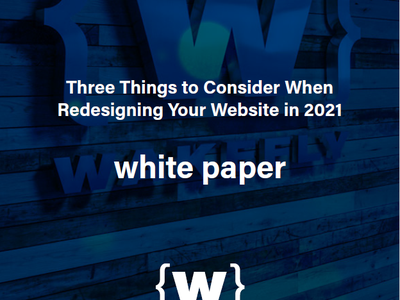Posted on 8/18/2015 in UX and Design
There is a lot that goes into building a successful website. From the early planning stages through launch, it’s important to follow a process to be sure that you don’t forget a critical step. This is part one of a four-part series that outlines our proven process for delivering a successful website. This first part covers the Discovery and Boarding Phase. The remaining three phases are as follows and will be covered in the coming weeks:
The Discovery and Boarding Phase
The Discovery and the Boarding Phase lays the foundation for your new site. There are a series of steps you take during this phase to make sure you lay all the right groundwork for the project.
Set Goals and Objectives for the Project
The first thing that you should do is meet with all key stakeholders and gather input on their goals and objectives for the project. Important items to uncover are:
- Who is the target audience for this site? (There could be multiple)
- What qualifies as a successful conversion action on the website?
- What are the most common questions that your sales team gets asked?
- What are the pain points from your current website?
- What are some examples of other sites that you like?
- Is there an event/product launch driving the timeline for this project? (If yes and the timing is tight, you may need to develop the site in more of a phased approach.)
Brainstorm with Creative Agency
Once you have a consensus on these topics internally, you are ready to kick off the project with your creative agency. This meeting should be treated like a focused brainstorming session. Based on the feedback received to the questions above, along with a careful review of any existing site analytics, the team will be able to make informed recommendations on how to adjust the site map, navigation, content, and functionality to better serve the site’s end users. After the creative strategy meeting, the web delivery team’s project manager will provide a project timeline to set expectations about the future milestones and input needed from both client and project teams.
Plan for the Build of the Website
The next step is to carefully plan for the build of the website based on what was uncovered in the strategy meeting. First, the web delivery team will determine if the main navigation and site map should be adjusted based on the feedback received. Do the main navigation items reflect the logical buckets of content that can be found on the site? Is there information that users are trying to find on the site but no such content exists? Or maybe it does exist but it’s buried and difficult to find. A new site map and navigation structure is proposed and reviewed with the client to get buy-in before incorporating it into the new design.

Create Wire Frames of Functional Areas
The next step is to create wireframes detailing all functional areas of the website. This is a critical step because it ensures that the designs take all functionality into account. It’s no good for a web page to look pretty if it doesn’t work. To get started, you will want to identify all of the unique types of pages that will exist on your web site. Once you have that list you can wireframe out the functional details for each of these pages. It is important to note that a wireframe is not a design layout. It should not include specific fonts and colors and even placement of elements is not meant to be final. The goal of the wireframe is to plan out all elements that need to be part of a page so that when we move to the design phase, the designer will keep this in mind when designing the actual page layout.
Create a Functional Specification
The final and most important step in this phase is the creation of the functional specification document. This document outlines exactly how the website will work from both end-user and administrator perspectives. It incorporates the site map and wireframes that we have already created and then takes it a step further to detail how the developer will build each element and how they will be managed moving forward. This document is helpful in uncovering gaps in the website build plan early on in the process so that a consensus can be reached before development begins. All key stakeholders should sign off on this document before web development begins. Skipping this step could lead to big delays and disappointment later in the project.
Now that you have the planning out of the way, it’s time to start watching your site come together. The second installment of this series will outline the Design Phase of a web site project.
Thinking about redesigning your website?
Contact us today to find out how we can help you!Related Articles

How Do I Optimize My Website for AI?
Why do you need to optimize your website for AI?AI-powered search engines like Google’s AI Overview, Perplexity, and tools such as Microsoft's [...]

Outdated or Outstanding? How to Tell If Your Website Needs a Refresh
Your website is the digital face of your business. It serves as a first impression, a marketing tool, and a resource for potential customers. [...]

Preparing a Website Redesign Budget for 2025: A Step-by-Step Guide
As we approach 2025, businesses are recognizing the necessity of a fresh, user-friendly website to stay competitive in a rapidly evolving digital [...]
